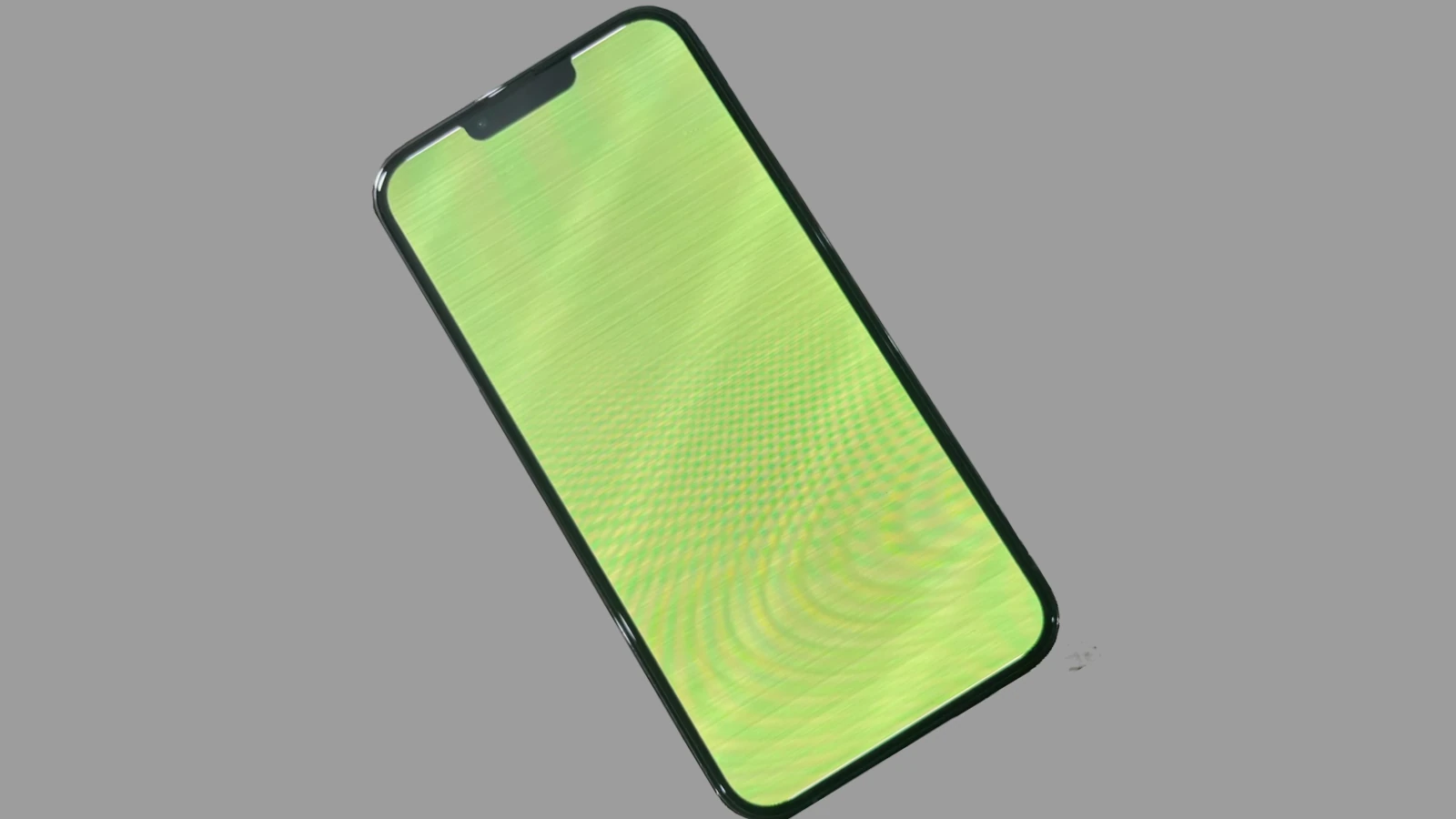OLED technology, which stands for organic light-emitting diode, is a significant leap in the evolution of iPhone displays. It is a display method that allows screen pixels to emit their light, making for deeper blacks and more vibrant colors compared to the traditional LCD screens. Apple adopted OLED displays starting with the iPhone X, appreciating the technology for its superior contrast ratios and the potential for thinner and more energy-efficient designs.
Since then, iPhones have consistently incorporated OLED displays, enhancing the user experience with crisp visuals and high-quality screen performance. The iPhone 13, for example, features a Super Retina XDR OLED screen, and the iPhone 14 series continues this trend with its large all-screen OLED displays. By embracing OLED, Apple has nudged the smartphone market toward a standard where exceptional display quality is an expectation, not a luxury.
As technology progresses, OLED displays in iPhones continue to improve, with advancements like ProMotion technology offering adaptive refresh rates up to 120Hz for smooth visuals. These displays also come with features like True Tone and wide color support, painting a full spectrum for the user’s viewing pleasure. Apple’s dedicated approach to integrating OLED technology underlines the importance of display quality in the overall smartphone experience.
iPhone OLED Technology
Apple first introduced OLED displays to the iPhone lineup in 2017 with the iPhone X. Since then, OLED has become standard on all flagship iPhones, delivering richer colors, deeper blacks, and better energy efficiency compared to LCD.
1. What Is OLED?
OLED stands for Organic Light-Emitting Diode.
- Each pixel is made of organic compounds that emit light when an electric current passes through.
- Unlike LCD, no backlight is needed — pixels can turn off individually, producing true blacks and high contrast.
Benefits for iPhone users:
- Infinite contrast ratio
- Higher brightness in HDR
- More vibrant colors
- Better battery efficiency for dark UI themes
2. Evolution of iPhone OLED Displays
| Year | Model | OLED Upgrade |
|---|---|---|
| 2017 | iPhone X | First iPhone with OLED (Super Retina HD) |
| 2018 | XS / XS Max | Improved color accuracy, HDR10, Dolby Vision |
| 2019 | 11 Pro / 11 Pro Max | Higher brightness, better efficiency |
| 2020 | 12 Series | OLED on all models, Ceramic Shield glass |
| 2021 | 13 Pro / Pro Max | ProMotion 120Hz adaptive refresh |
| 2022 | 14 Pro / Pro Max | Always-On Display, Dynamic Island |
| 2023 | 15 Series | Brighter panels, reduced power usage |
| 2024 | 16 Series | Tandem OLED on Pro models for higher brightness & longevity |
3. iPhone OLED Types
A. Super Retina HD
- Early OLED branding (iPhone X, XS, 11 Pro).
- High resolution, HDR support, wide color gamut.
B. Super Retina XDR
- Introduced with iPhone 11 Pro.
- Higher peak brightness (up to 1600 nits HDR, 2000 nits outdoor on newer models).
- Improved contrast and energy efficiency.
C. Tandem OLED (2024+)
- Found in iPhone 16 Pro and 16 Pro Max.
- Two OLED layers stacked for:
4. Key Features of iPhone OLED in 2025
- ProMotion (120Hz adaptive refresh) on Pro models for smoother scrolling.
- Always-On Display with smart dimming to save battery.
- HDR10 & Dolby Vision for cinema-quality video playback.
- True Tone adjusts white balance to ambient lighting.
- Wide Color (P3) for more lifelike colors.
5. Advantages Over LCD
| Feature | OLED | LCD |
|---|---|---|
| Contrast | Infinite (true black) | ~1400:1 |
| Brightness | Higher peak in HDR | Lower peak |
| Power Efficiency | Better for dark content | Less efficient |
| Viewing Angles | Wider | Narrower |
| Thickness | Thinner | Thicker |
6. The Future of iPhone Displays
- All models OLED by 2025 — Apple phased out LCD in iPhones.
- Tandem OLED likely expanding to non-Pro models in future generations.
- Rumors of microLED in 2027–2028 for even better brightness and longevity.
💡 Tip: If you want the brightest, most efficient iPhone display today, the iPhone 16 Pro or Pro Max with Tandem OLED is the top choice.
Key Takeaways
- OLED display technology enhances color and contrast in iPhone screens.
- Beginning with iPhone X, Apple’s iPhones feature OLED displays for superior visual performance.
- Advances in OLED technology contribute to the dynamic evolution of iPhone displays.
Evolution and Technology of OLED in iPhones
Apple’s introduction of OLED screens to the iPhone range marked a significant leap in display technology, enhancing user experience through superior contrast and power efficiency.
Historical Developments and OLED Introduction
The first iPhone to feature an OLED display was the iPhone X, released in 2017. This model was Apple’s turning point in display technology, moving away from the traditional LCD. OLED displays are unique because they emit their own light, which means no backlight is needed. This technology enables deeper blacks and a high contrast ratio.
Advancements in OLED Technology for iPhone
With each new iPhone generation, OLED technology has improved. The iPhone 12 series introduced OLED screens across all its models, including the iPhone 12, iPhone 12 Mini, iPhone 12 Pro, and iPhone 12 Pro Max. These displays offer high brightness levels, vibrant colors, and enhanced efficiency compared to earlier models.
Comparison With Previous iPhone Displays
Prior to the OLED era, iPhones like the iPhone 11 Pro and iPhone 11 Pro Max used LCD screens that required a backlight. This meant that pixels could not turn off completely, leading to less true blacks and slightly less energy efficiency. The transition to OLED displays in later models allowed individual pixels to light up independently, improving the dynamic range and reducing power usage when displaying true black.
Market Dynamics and Future of iPhone OLED Displays
The iPhone OLED market is witnessing significant shifts in manufacturing, technology, and consumer impact. Several companies like Samsung and LG play key roles in the supply chain, and new iPhone models continue to push the envelope in display innovation.
Manufacturing and Supply Chain Insights
Samsung and LG are major players in the OLED supply chain. They work hard to meet Apple’s demand. They keep up with mass production schedules especially for flagship models like the iPhone 14 Pro and iPhone 15 Pro. Industry sources like The Elec report that Apple’s shift to all-OLED lineups requires a strong and responsive supply chain.
Upcoming Models and Technological Innovation
Apple plans to launch the iPhone 15 series with improved OLED displays. The iPhone 15 Pro and iPhone 15 Pro Max might feature better brightness and contrast ratios. Rumors suggest even the iPhone 15 Plus will join the OLED trend. Exciting features like the Dynamic Island introduced with the iPhone 14 Pro could evolve. Talk around the iPhone 16 Pro Max hints at more display breakthroughs.
Consumer Impact and Pricing Trends
The shift to OLED in all models impacts cost. The price of the iPhone 15 and iPhone 15 Plus could reflect this. But Apple works to balance cost with value. With each launch, Apple assesses how pricing fits with the market and technologies provided. Consumers get high-quality displays, which sometimes means higher costs. However, improvements in technology could eventually lower prices as OLED production becomes more cost-effective.







